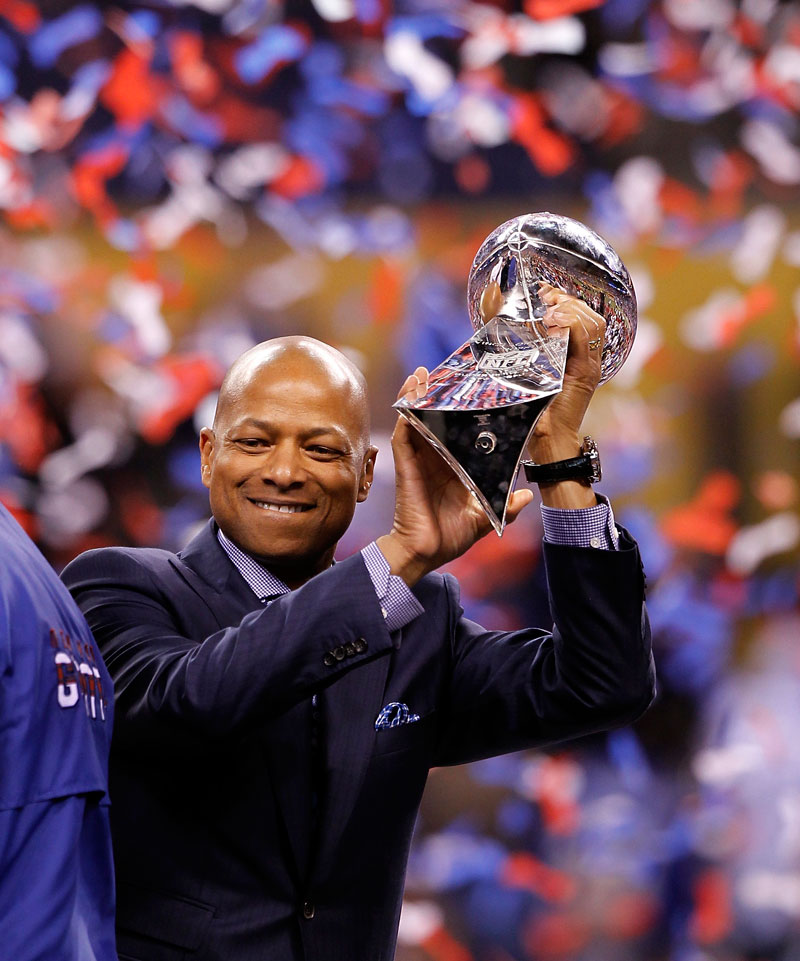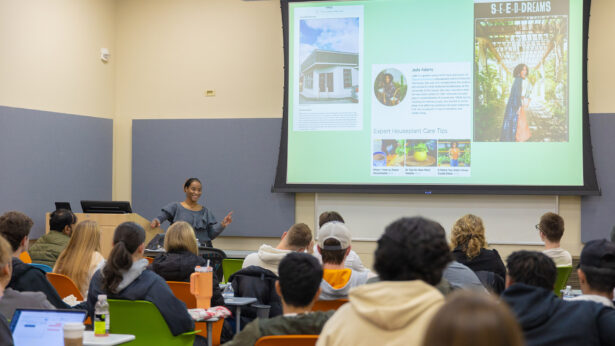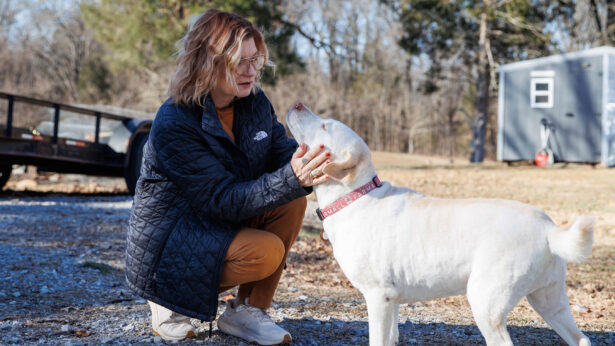Twenty years ago, Jerry Reese’s dream job was head football coach at UT Martin. But he gambled on an opportunity with the New York Giants. Today he’s the Giants’ general manager—and he’s got two Super Bowl championship rings.
By Elizabeth A. Davis
Bordering the Mississippi River, rural Lake County is one of the western-most counties in Tennessee. Its 2010 population ranked 91st among 95 counties, average household income was 94th and its 5.2 percent of college graduates was dead last. The Northwest Correctional Complex is one of the largest employers. Perhaps a little sparse in population and things to do on a Friday night, there’s no lack of famous events and inspiring people.
“You really can’t make that story up.”First, there’s Reelfoot Lake, created or enlarged through a series of earthquakes from December 1811 to March 1812 along the New Madrid fault. The earthquakes are believed to have been so strong that people as far away as Washington, D.C., and Quebec City, Canada, felt them.
Carl Perkins, born near Tiptonville, wrote and recorded the 1956 hit Blue Suede Shoes. Early on, his family made a living as sharecroppers, and he sang and played the guitar with his brothers. He was on tour with Elvis and Johnny Cash when he was inspired to write his biggest hit. Later musicians such as the Beatles and Eric Clapton said they were influenced by Perkins.
If you want a more recent hit, look no further than Jerry Reese, general manager of the New York Giants, winners of two of the last five Super Bowls. Reese’s journey from his hometown of Tiptonville to his days as a player and coach at UT Martin to NFL scout to GM has been described as a fairy tale, a rags-to-riches example of the American dream.
Or take it from Reese (Martin ’87, ’88) himself after he tells it: “You really can’t make that story up.”
When he was named GM in 2007, he became only the third African-American to head an NFL front office. Since then, three more African-Americans have been hired around the league, including Reggie McKenzie (Knoxville ’86) at the Oakland Raiders last year. The role of the general manager can vary from team to team, but overall the GM is responsible for hiring the coach and forming the team and is often criticized for cutting marquee players or praised for making good draft picks.
Because of the Giants’ success under Reese’s direction, the town of Tiptonville and Reese have received a great deal of attention from the media. Reporters have ventured to Lake County to see where Reese got his start and to talk to people who knew him before he was discovered by New Yorkers.
Reese’s Ticket to College
Reese was one of seven children, and his father died when he was 7. His mother, Ozella, married Clarence Garland a few years later. She was an example of hard work for her family, working at a factory and then as a guard at the prison. During the summer, Reese worked in his great-grandfather’s slaughterhouse, and he was known to shoot squirrels and rabbits to help feed the family. Although Lake County has few college graduates, Reese and his siblings were encouraged to get a degree. Football was Reese’s ticket to meet that goal.
As a quarterback and defensive back, Reese led Lake County High School to the state championship in 1980. Although small and lightweight for a football player, Reese drew some attention from colleges.
“UT Martin had a solid offer for me, and coming from the poor background I came from, that was a great opportunity for me to get my education paid for,” Reese says. “Plus, it was close to home.”
So Reese packed up and went to Martin, about 45 miles from Tiptonville. He excelled as a defensive back for UT Martin, was a two-time All-Gulf South Conference honoree and led the conference in interceptions as a sophomore.
Jerry Carpenter (Martin ’66), UTM golf coach and retired director of the campus book store, has been a high school football referee for 44 years and first saw Reese as a high school player. Once Reese got to UT Martin, Carpenter followed his career and got to know him very well.
“He was a small guy in stature, but (with) his heart and the way he played, he was a big man,” Carpenter says.
After graduation, Reese was hired as a graduate assistant for the football team, and his coaching career started.
At UT Martin, Reese met his wife, Gwen (Martin ’88, ’93), who worked with Carpenter’s wife in the admissions office. “The best thing that happened to Jerry Reese, he married Gwen. She was top of the line,” Carpenter says.
Things were going well for Reese. He became a full-time coach in 1988 and was named assistant head coach in 1993. His path seemed clear: One day Reese would be head coach at UT Martin.
“He probably would have had a shot at it because we were changing coaches every three or four years,” Carpenter says.
But, of course, that is not how the story goes.
Another assistant coach on the team was Jeremiah Davis. Reese relates an interesting episode in their relationship to author Tom Callahan, whose 2007 book, The GM, follows the last season Ernie Accorsi was general manager of the Giants and documents the hiring of Reese.
Reese tells Callahan: “Jeremiah and I were playing chess late one night when he looked up from the board to say, ‘I’m going to work for you one day.’ Just like that. I thought he was stalling because I was winning the game. I said, ‘Come on, Jeremiah, make your move.’ ‘Listen to me,’ he said. ‘I’m serious. I’m going to work for you one day.’ I didn’t think anything else about it.”
Davis left Martin to be a scout for the Giants. Then, after Reese was named assistant head coach, Davis called up Reese and asked if he wanted to scout for the Giants in the Southeast.
“I pushed it away initially because I’m in line to be head coach at UT Martin. My wife and I talked about it and prayed about it. My wife said, ‘Give it a shot,’ and 13 years later I’m president and general manager of the New York Giants, and I’ve been general manager for (six) years now, and we’ve won two Super Bowls,” Reese says, jumping ahead in the story.
Reese began his career with the Giants in 1994 as a scout. He visited colleges and universities and attended games to find players of all positions who had the kind of skills the Giants needed.
“It’s a pretty tough job. You’re on the road 185 to 200 days out of the year,” Reese says.
In 1999, Reese was promoted to the New York office and served as an assistant in the pro personnel department. He was named director of player personnel in 2002. During his tenure, the Giants drafted quarterback Eli Manning, defensive ends Osi Umenyiora and Justin Tuck, running back Brandon Jacobs and offensive tackle David Diehl, all of whom played on both Super Bowl-winning teams. (And he did indeed become Davis’ boss.)
Accorsi pushed Reese along the way and advocated Reese for the GM job over the other candidate, Chris Mara, vice president of player evaluation and whose family owns part of team.
The Giants named Reese senior vice president and general manager on Jan. 16, 2007. Even those who knew Reese well were a little surprised, not because of his qualifications and talents but because of his journey to get there.
“You just wouldn’t think that somebody from rural West Tennessee and Lake County could be general manager of the New York Giants,” says Carpenter. “But it says a lot of Jerry and the kind of person he is, the drive and the ability to meet people and get along with people. That part of it didn’t surprise you.”
An Important Opportunity
The press conference was held the day after Martin Luther King Jr. Day. Reese’s success is more than just one individual’s achievement.
“It was important for me, and I said this at the time, that failure was not an option. There were a lot of people, African-Americans, who suffered to give me this opportunity,” Reese says. “So it’s important for me on a lot of levels to be successful.”
Reese’s hiring is historically significant for the NFL, says Fritz Polite, clinical assistant professor in the Department of Kinesiology, Recreation and Sports Studies and director of the Institute for Leadership, Ethics and Diversity at UT Knoxville.
Before Reese, the first two African-American GMs were Baltimore’s Ozzie Newsome, a former player, and Houston’s Rick Smith, a former college and NFL assistant coach.
“Many of the NFL front-office personnel are either family members or former players/coaches,” Polite says. “He learned the trade from the bottom up and has shown an extremely consistent pattern of success at every level. This speaks volumes about his preparation, work ethic and keen sense of emotional intelligence in assessing player talent.”
Polite got to watch Reese in action while he worked as a consultant with the Giants for 10 years, helping with pre-draft player assessment and evaluations.
“He can be democratic in his leadership style but can definitely make the tough calls when he needs to,” Polite says. “He loves the underdog, and I think it is because it reminds him of his climb from obscurity into the big-time world of the National Football League and two world championships.”
Reese maintains many relationships in Tennessee. He visits family and friends in the summer, and he was the UT Martin commencement speaker in 2011.
With all the success he’s had, Reese understands the fickle nature of professional sports.
“Most of us in this business are driven by that challenge to try to be successful year in and year out and be relevant. Being in this league, you just have to understand it’s such a privilege to be here,” he says. “I count my blessings every day that I have been afforded this opportunity.”



